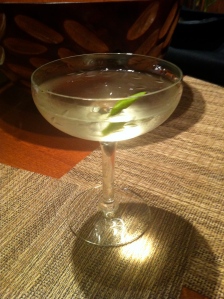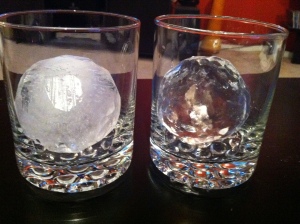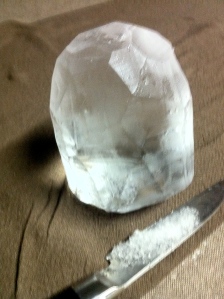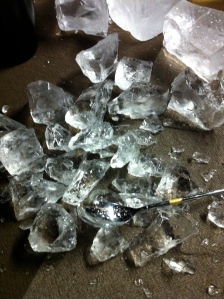A few weeks ago I read a NY Times article on lime cordial and Gimlets. It basically went like this: The only lime cordial left on the market is Rose’s, which is garbage. So bartenders that care have begun using fresh lime juice and sugar to make Gimlets, which really aren’t Gimlets, but gin sours. You see a Gimlet needs lime cordial in order to be.
So how do we go about making a delicious Gimlet without changing it into another cocktail? Make our own lime cordial or preserved lime juice.
The recipe the NY Times provides for a home made lime cordial, while delicious, is no more than fresh lime and sugar made in batch with some lime peel added for complexity. So we aren’t really solving the problem.
As the wheels in my head started turning I remembered Dave Arnold’s seminar at Tales of the Cocktail Vancouver, where he talked about simple lime juice clarification using agar. Also, cordials traditionally had some sort of spirit base. Alcohol not only works as solvent to pull flavors from spices and fruit, but act as a preservative when incorporated into the final product. After all, cordials were originally produced to extend ‘shelf life’ of fruit that would otherwise go bad quickly.
So…using the recipe in the NY Times as a starting point and adding in a few other techniques, I have come up with a recipe for a true lime cordial that will most likely get used before it goes bad.
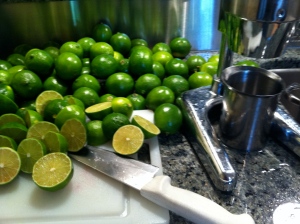 Start by peeling 18 limes getting as little of the white pith as possible. Soak peels and 1 tablespoon coriander seeds in 8oz of white rum. I like to use Chairman’s Reserve or Wray and Nephew Overproof, but Cruzan will work as well and is a bit cheaper. Let sit for 48 hours then strain.
Start by peeling 18 limes getting as little of the white pith as possible. Soak peels and 1 tablespoon coriander seeds in 8oz of white rum. I like to use Chairman’s Reserve or Wray and Nephew Overproof, but Cruzan will work as well and is a bit cheaper. Let sit for 48 hours then strain.
While waiting for the above we need to juice the peeled limes plus a few. We want about 3 cups of fresh lime juice in total. Then we clarify the juice. Here is Dave Arnold’s method, it is a geek out paradise if you are like me. If you aren’t like me I will try to simplify it a bit for you.
Agar is derivative of seaweed that acts similar to gelatin, it can be found in most Asian specialty markets. Begin by adding about 2 grams of agar to 1 cup of cold water and bring to a boil, dissolving the agar completely. Remove from heat and slowly pour in your lime juice in order to temper it, making sure the liquid doesn’t drop below 95 degrees Fahrenheit or the agar might begin to set early, it shouldn’t be a problem at these volumes. Place in a shallow pan or bowl and refrigerate until it gels.
Once jellied, break it apart using a whisk and strain through muslin, slowly massaging the liquid out instead of forcing it through. you should get most of the juice back but it will be completely clear. If you are impatient like me and squeeze a little too hard you will probably get some of the agar through the bag, just run it through a coffee filter.
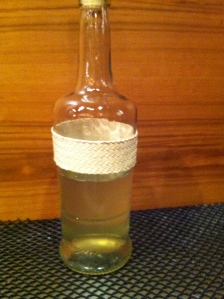 Once your juice is clear and filtered, add an equal amount of sugar and stir until completely dissolved. Then add in the “infused” rum, mix thoroughly, and bottle.
Once your juice is clear and filtered, add an equal amount of sugar and stir until completely dissolved. Then add in the “infused” rum, mix thoroughly, and bottle.
Keep your cordial in the refrigerator to maximize shelf-life. My first batch lasted over two months and tasted just as good on the last drink as the first.
1 1/2 oz Gin
1 1/2 oz lime cordial
Stir, strain into cocktail glass
Garnish with a lime peel

